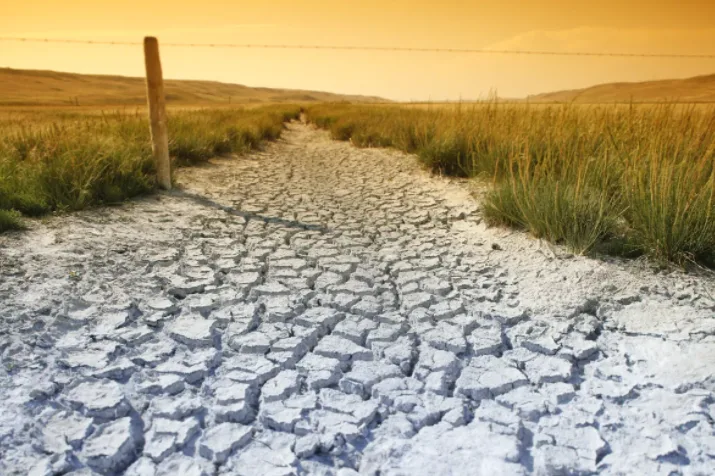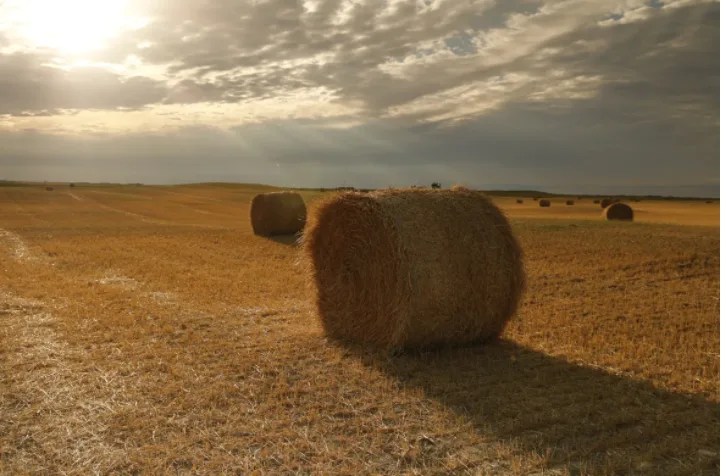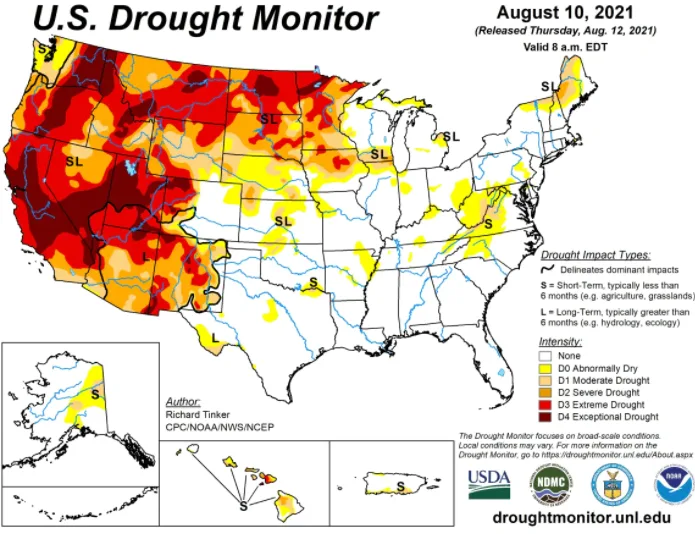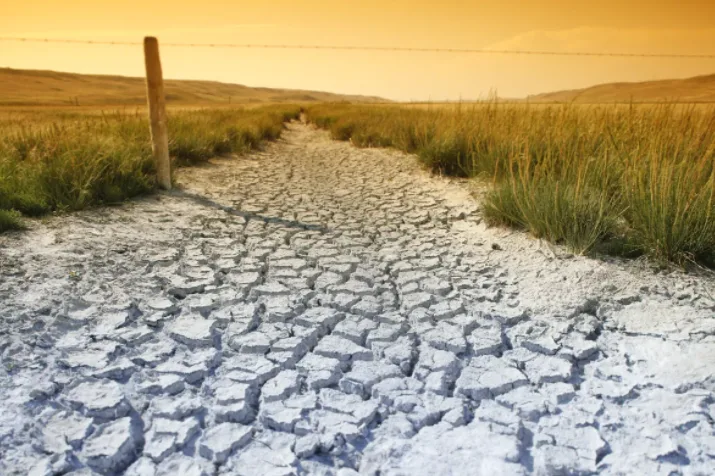
Prairie farmers struggle as drought set to rank among worst in Canadian history
Saskatchewan farmer Derek Tallon is harvesting one of the worst lentil crops he's ever grown.
Like other farmers in the region, he watched his crops struggle to grow without much rain or reprieve from unrelenting heat during what one expert says is shaping up to be the worst drought in Canadian history.
Tallon's farm in southern Saskatchewan only received about 50 millimetres of rain this year, compared to 190 millimetres during a normal year.
"This should probably be some of our weakest stuff," he said, scooping up a fistful of dried plants.

Heat, wind, grasshoppers and very little rain have resulted in major production loss for Saskatchewan farmers. (Richard Agecoutay/CBC News)
"There's only a handful of lentils here. The grasshoppers have shelled out a lot of what was here on to the ground and chewed off a lot of the leaves. Production is down to almost nothing."
The 40-year-old and his father farm about 16,000 acres near Lafleche, which is about 200 kilometres southwest of Regina. They grow a mix of grains, pulses and oil seeds.
They have only been able to produce five bushels of lentils an acre this year, a far cry from their long-term average of 27 bushels an acre, says Tallon.
"We are probably only at about a quarter of a normal crop [in this region], maybe in certain areas even less than that," he said.
Tallon says he is disappointed but accepts "the inherent risks" of farming.
DROUGHT COULD BECOME WORST IN CANADIAN HISTORY
This year's drought is on its way to becoming the worst the Prairies have ever recorded and the worst ever in Canada, according to John Pomeroy, Canada research chair in water resources and climate change at the University of Saskatchewan. It is already worse than a severe drought in 1961, he said.
"It's early to call it the most severe [drought] at this point, but it certainly has all the hallmarks of heading in that direction," Pomeroy said.

Canada is one of several areas in the world affected by droughts. To the south, severe droughts have hit the western half of the United States. (U.S. Drought Monitor)
A decade-long drought hit Saskatchewan in the 1930s, but areas like northern Alberta and northern Saskatchewan were unaffected at the time, he said.
"There are no areas like that now," said Pomeroy.
Temperatures in July were three to four degrees hotter than normal while the amount of precipitation was one of the lowest on record, he said.
"When you combine those two, then it looks like the most severe drought is emerging ever experienced over the Prairies," he said.
The conditions extend beyond Canada, he said, with severe droughts in the western half of the United States, the Mediterranean region, Kazakhstan and Russia, as well as years of drought in Australia.
The consequences for food security could be "quite severe," he said.
Farmers who manage to squeeze out an average harvest this year could end up doing quite well as grain prices continue to soar, fuelled by low supply.
That's giving Tallon something to look forward to.
"We could be looking at high grain prices next season and that's our hope right now — we grow a crop next year and we capitalize on the price increases we've seen," said Tallon.
'CROP FAILURE ON OUR HANDS'
About 25 kilometres east, near the village of Limerick, farmer Barry Reisner also tries to remain positive.
"Farmers are resilient," he said. "We've had a number of good crops in the last 10 years or so, and it shouldn't be a surprise that they can't all be good."
In his 50 years of farming, Reisner says he has learned to accept the bad with the good, and to manage risks with insurance and other strategies.
Still, it's tough to swallow.

University of Saskatchewan Prof. John Pomeroy predicts more frequent and severe droughts in the Prairie region by the late 21st century. (Richard Agecoutay/CBC News)
"We just haven't had enough rain to produce a crop, so we have a crop failure on our hands," he said. "It's hard to see your efforts going down the drain."
He says he worries about other farmers who may face financial penalties after signing contracts guaranteeing shipments and price with grain companies months ago.
"Farmers who have signed those contracts don't have the grain to deliver, and they have a commitment that they can't meet," said Reisner.
This is already the second severe drought Saskatchewan has experienced since the start of the century, after one in 2001-2002.
The future for farmers remains uncertain, with predictions of more extreme droughts as well as floods.
"Under some of the business-as-usual scenarios, it shows Saskatchewan warming up by six to seven degrees by the end of the century from what we are now, which is already too warm," said Pomeroy.
This story, written by Bonnie Allen and Theresa Kliem, was originally published by CBC News on August 14, 2021. Contains files from Richard Agecoutay.





